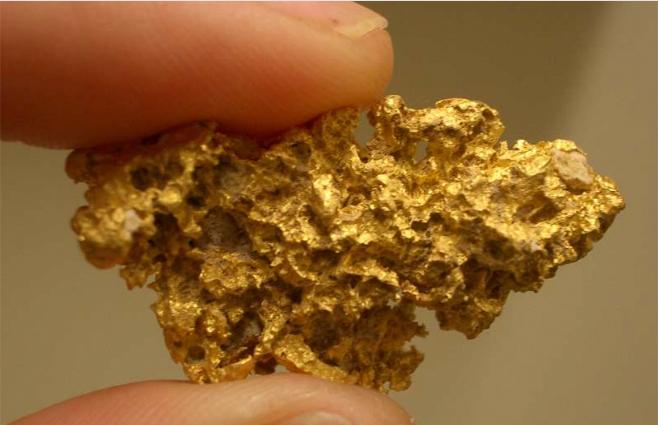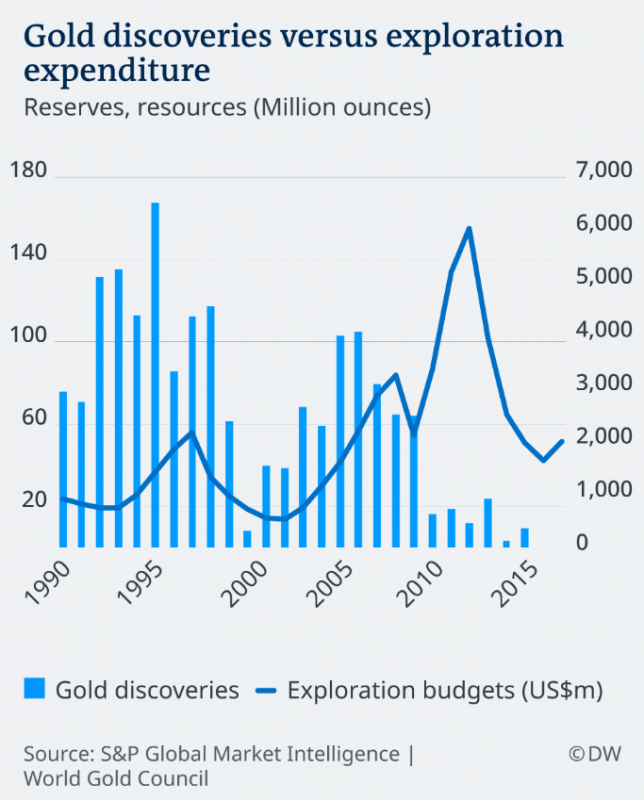Authored by Tom Lewis via GoldTelegraph.com,
Gold has been used for jewelry and currency for thousands of years. It has always served as a source of status and wealth. The reason for its popularity is its rarity. Gold is a finite commodity. There is only so much of the golden metal available, and it can’t be manufactured.
Some experts, including Goldcorp’s chairman, Ian Telfer, are predicting that the amount of future gold to be mined is already on the decline. The fact that gold mining is on the decline is nothing new. That has happened before. What is worrying some investors is that the world may be running out of physical gold.
Should investors be worried?
The discovery of new gold deposits has been declining while mining companies are spending more money on exploration for new sites. Most of the newly-found deposits have been small and expensive to extract. No high-grade deposits with at least 5 million ounces of gold, or “world-class” deposits, have been found in a long time. These world-class deposits have yielded more than 50 percent of today’s available gold.
What little is being extracted is becoming costly to obtain. Many deposits are producing 1.4 grams of gold per ton, as compared to 10 grams in the 1970s.
Mining companies are struggling. Many have merged to offset decreasing profits and declining gold supply. The gold industry has been witnessing a wave of mergers over the past few months as producers battle poor returns and diminishing reserves.
In March of this year, Barrick Gold, the world’s second-largest gold producer, and Newmont Mining agreed on a joint venture in Nevada instead of Barrick Gold buying Newmont Mining outright. Newmont Mining acquired Goldcorp earlier this year in an effort at developing greater and more economical resources.
Barrick Gold believes that Nevada still has plenty of gold, perhaps 76 million ounces.
According to mining analyst John Ing, it may be cheaper to buy another gold mining company than explore for new gold. This opinion is seconded by analyst Ryan Hanley of Laurentian Bank Securities, who claims that the time and cost of gold exploration makes mergers a more profitable proposition for these majors.
The real problem is not the lack of gold but the current price of gold. The price of gold has been holding at around $1,300 an ounce, down from its high of $1,800 an ounce in 2012. However, with peak gold in sight, we anticipate the price of gold to elevate so more exploration dollars can be allocated.
The amount of money mining companies have allocated for new explorations has declined from a high of $21 billion in 2012 to $10.1 billion in 2018.
While global economies are currently presenting a strong picture, it is anticipated that economic growth will slow down globally. This could very well see the price of gold climbing to $1,300 an ounce, its highest level since 2013. A rise in gold prices is very likely with geopolitical and recession risks to coincide with peak gold.
via ZeroHedge News https://ift.tt/2HXaPjQ Tyler Durden

